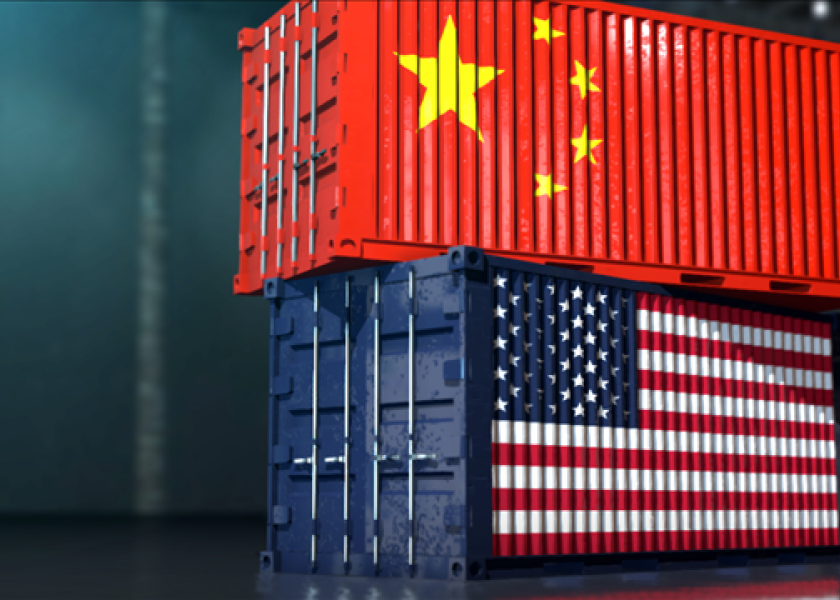An economist says the Ukraine-Russia war is affecting commodity markets, and U.S. farmers will...
Study Warns of Major Risks to U.S. Farmers from Potential U.S./China Trade War

A recent economic study commissioned by the American Soybean Association (ASA) and the National Corn Growers Association (NCGA) highlights the potential negative consequences of a renewed U.S./China trade war on American farmers and rural communities. The study, conducted by the World Agricultural Economic and Environmental Services, reveals that American-imposed tariffs could significantly harm U.S. producers while benefiting competitors like Brazil and Argentina. The study predicts an immediate and substantial drop in corn and soybean exports to China if a new trade war were to occur. Specifically: Soybean exports to China could fall by 14 MMT to 16 MMT annually, representing a 51.8% average decline from expected baseline levels. Corn exports to China could decrease by about 2.2 MMT annually, an 84.3% average decline from baseline expectations. The potential trade war would lead to a steep drop in soy and corn prices, causing a ripple effect across rural economies where farmers live, purchase inputs, use services, and buy household goods. Leaders at NCGA and ASA believe maintaining a trading relationship with China is in America’s economic interests, even as both governments work through trade and other concerns. The research underscores the importance of thoughtful consideration regarding the impacts of tariffs and tariff retaliation on U.S. farms and rural communities, as the potential consequences could be far-reaching and long-lasting.
EDITOR’S TAKE:
Maybe, maybe not! The relationship with an adversarial country, such as China, is very complex and difficult, to say the least. Of course, the ideal situation would be a level playing field where all parties agree to and follow the same trading rules. That, however, is not the case with China. They do not have the same labor or environmental standards. The level of technology use in production is much less sophisticated. Their entire financial and regulatory schemas are much different than those in the U.S. And the list goes on. The other complication is competition from other crop production areas, such as Russia, Brazil, Argentina, etc. So, the question becomes, how do you compensate for cost advantages created by cheap labor, cheap land and other factors benefiting other countries that provide them with a definite advantage. Trade agreements provide one tool that can be beneficial as long as all parties uphold their end of the bargain. Monetary policies that provide relative parity with other currencies is another wrench in the toolbox. But when other options fail to produce the desired result, tariffs could be the correct choice. Personally, I am not a big fan of tariffs but recognize their role in the proper circumstance. Much will depend on how the parties decide to approach the relationship. It’s obvious that farmers/ranchers in the U.S. want a solid trade relationship with China, who doesn’t? At the same time, we cannot sit back and allow China to dominate the relationship without taking strong action to counter their aggressive behavior. Just like you can’t sit back and let the competition steal deals from right under your nose when you have all the tools CAD has to offer – AgTruckTrader.com®, AgPack®, CADFI, CAD Protect, and AgWagon.








